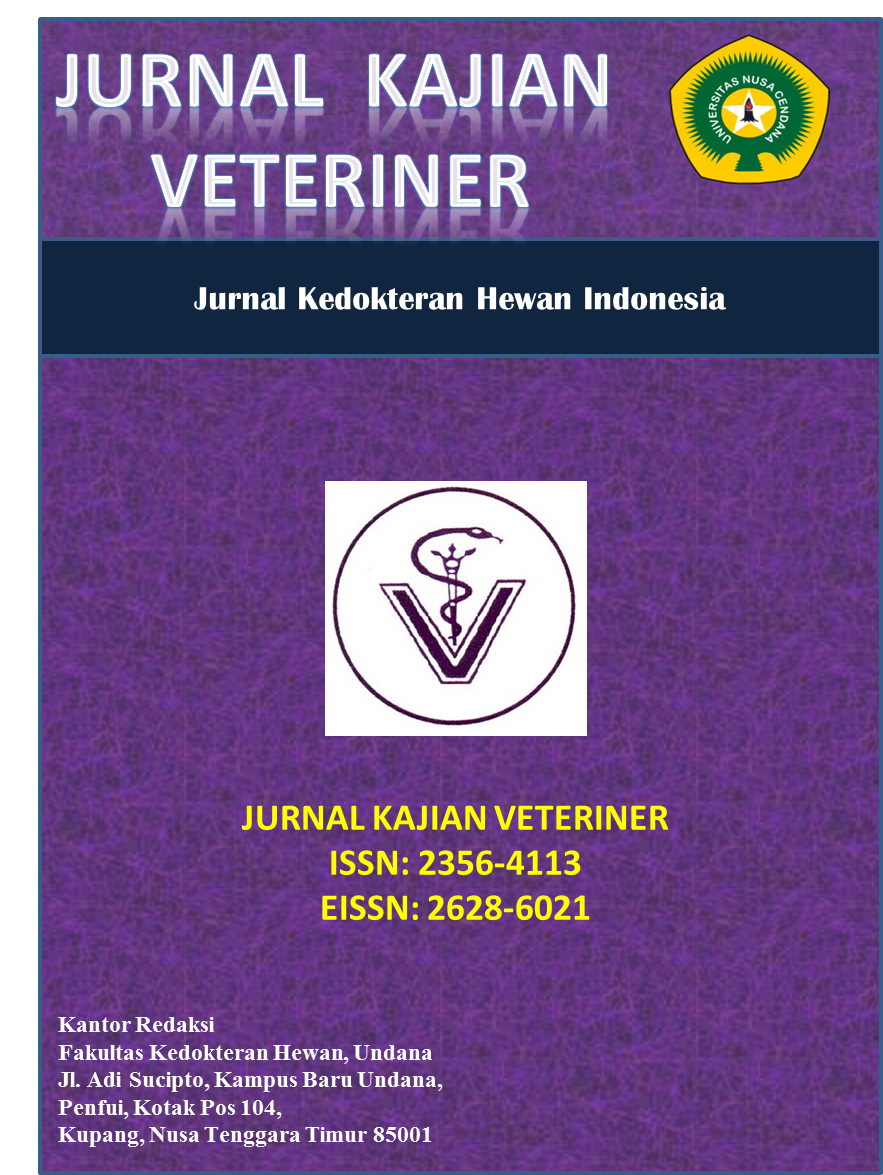Pengaruh Pakan terhadap Status Fisiologi Kambing Kacang (Capra aegragus hircus) dengan Pola Pemeliharaan Insentif di Daerah Lahan Kering
Effect of Feed on Physiological Status of Goats (Capra aegrarus hircus) with Incentive Maintenance Patterns in Dryland Areas
Abstract
The aim of this research was to determine the ratio between the provision of Moringa to the physiological status (body temperature) of female goats. This research was conducted in the dryland field laboratory of the Nusa Cendana University, using 16 adult female goats, with a range of 6-7 months and body weight ranging from 10-12 kg. Goats were divided into 2 groups, namely groups using ammoniated grass and concentrate formulations combined with Moringa and without Moringa. The results showed that the body temperature of kacang goats that placed in individual cages with incentive maintenance patterns with cage adaptation for approximately 45 days, with a feeding pattern with no moringa concentrate and with moringa that given in the morning ranged from 38.8-39.0˚C and 38.7-39.2˚C. While in the afternoon, ranging from 38.7-39.2˚C and 38.7-39.0˚C. The conclusion is this body temperature was still in the normal range of body temperature for young female kacang goats.
Downloads
References
Eko M, Sugeng R, Sri S. 2015. Pemanfaatan Daun kelor untuk Meningkatkan Produksi Ternak Kelinci New Zealand. Jurnal Buana Sains, 15(2): 119-126
Karstan AH. (2006). Respon Fisiologis Ternak Kambing yang di Kandangkan dan ditambahkan Konsumsi Pakan dan air Minum. Jurnal Agroforestri. 1(1): 68-69.
Purwanto BP, Makamusu F, Yamamoto S. 1993. Preceeding VII Word Conference in Animal Production, Aedmonton, Alberta, Canada cit Pamungkas, FA dan Hendri 2006. Respon Fisiologis Tiga Jenis Kambing di Musim Kemarau pada Daratan Rendah. Prosiding Peternakan.
Sonjaya. 2012. Dasar Fisiologis Ternak. PT. Penernbit IPB Press, Bogor.
Suprayogi. 2013. Pengelolaan Kesehatan Hewan dan Lingkungan Penuntun Praktis di Lapangan. PT Penerbit IPB Press, Bogor. Hal 14-15
Qisthon A, Widodo Y. 2015. Pengaruh Peningkatan Rasio Konsentrat dalam Ransum Kambing Peranakan Etawah di Lingkungan panas alami terhadap Konsumsi Ransum, Respon Fisiologis dan Pertumbuhan . jurnal Zootek. 35(2): 351-360.
Copyright (c) 2021 JURNAL KAJIAN VETERINER

This work is licensed under a Creative Commons Attribution-NonCommercial-NoDerivatives 4.0 International License.

 Nancy Foeh(1*)
Nancy Foeh(1*)








.png)


